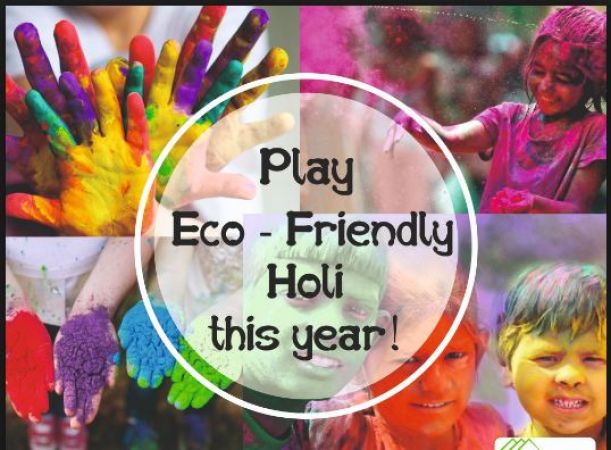
Holi is meant to celebrate the arrival of Spring while the colors used in Holi are to reflect of the various hues of spring season. But unfortunately, in modern times Holi does not stand for all things beautiful. Like various other festivals, Holi too has become ruthlessly commercialized, boisterous and yet another source of environmental degradation. To de-pollute Holi and make it in sync with nature, as it is supposed to be, several social and environmental groups are proposing a return to more natural ways of celebrating Holi.
The aim of this articles is to generate awareness amongst people about the various harmful effects around Holi celebrations and encourage people to celebrate an eco friendly Holi!
1. Harmful Effects of Chemical Colours
In earlier times when festival celebrations were not so much commercialized Holi colors were prepared from the flowers of trees that blossomed during spring, such as the Indian Coral Tree (parijat) and the Flame of the Forest (Kesu), both of which have bright red flowers. These and several other blossoms provided the raw material from which the brilliant shades of Holi colours were made. Most of these trees also had medicinal properties and Holi colors prepared from them were actually beneficial to the skin.
Over the years, with the disappearance of trees in urban areas and greater stress for higher profits these natural colours came to be replaced by industrial dyes manufactured through chemical processes.
Harmful Chemicals in Holi Paste type colors
According to their researched fact sheet on Holi, the pastes contain very toxic chemicals that can have severe health effects. Please check the table below to know about the chemical used in various Holi colors and their harmful effects on human body.
Color Chemical Health Effects
Black Lead oxide Renal Failure
Green Copper Sulphate Eye Allergy, Puffiness and temporary blindness
Silver Aluminium Bromide Carcinogenic
Blue Prussian Blue Contract Dermatitis
Red Mercury Sulphite Highly toxic can cause skin cancer
Harmful Chemicals in Gulal
The dry colours, commonly known as gulals, have two components – a colourant that is toxic and a base which could be either asbestos or silica, both of which cause health problems. Heavy metals contained in the colourants can cause asthma, skin diseases and adversely affect the eyes.
also read Audi A6 Lifestyle Edition launched in India, read specifications,price and other details
Harms of Wet Holi Colors
Wet colours, mostly use Gentian violet as a colour concentrate which can cause skin dis-colouration and dermatitis.
These days, Holi colours are sold loosely, on the roads, by small traders who often do not know the source. Sometimes, the colours come in boxes that specifically say ‘For industrial use only’.
Purchase Natural Holi Colors
For those who do not have the time to make their own colours, there is the choice of buying natural Holi colours. Several groups are now producing and promoting such colours, although it is important to verify the ingredients of the colours and ensure you know enough about the source.